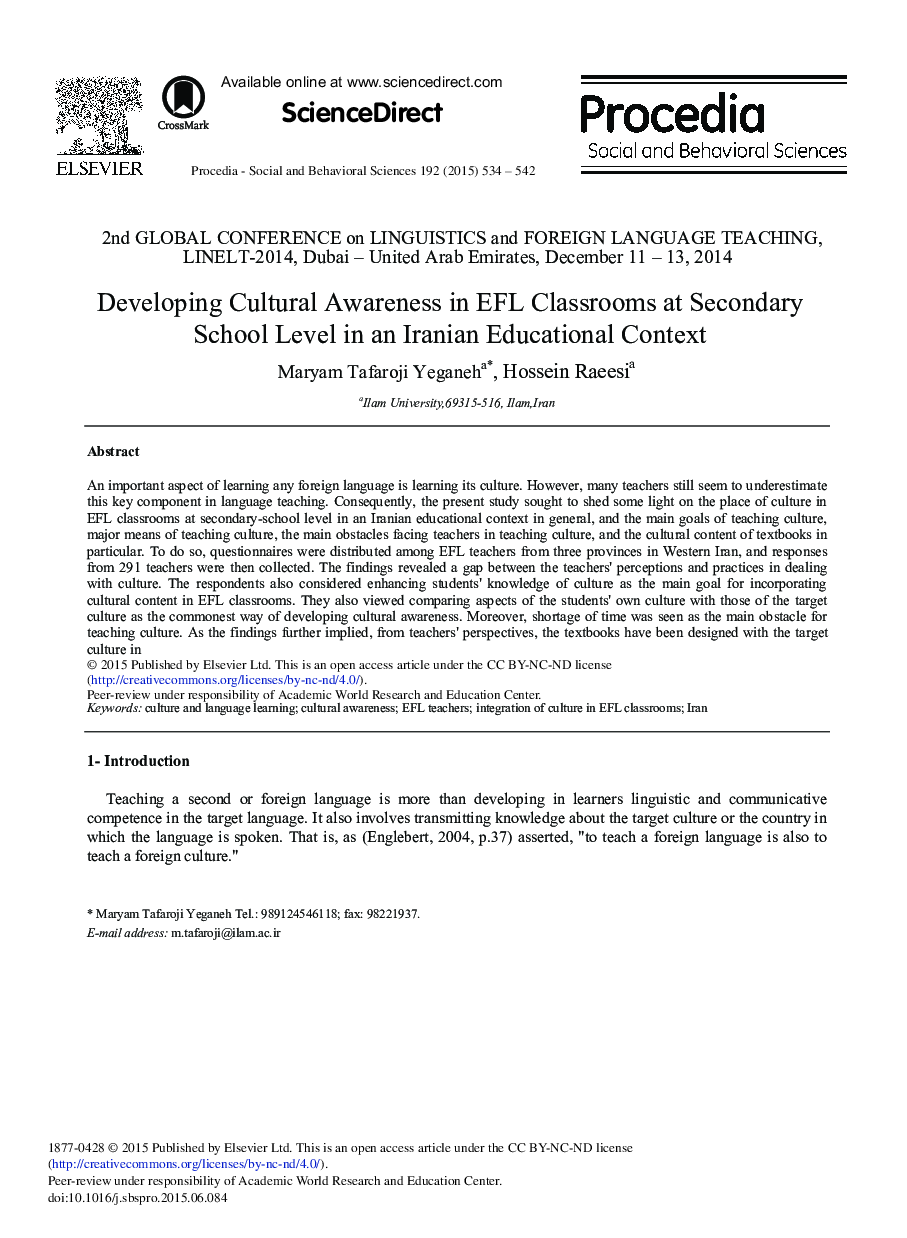| Article ID | Journal | Published Year | Pages | File Type |
|---|---|---|---|---|
| 1109292 | Procedia - Social and Behavioral Sciences | 2015 | 9 Pages |
An important aspect of learning any foreign language is learning its culture. However, many teachers still seem to underestimate this key component in language teaching. Consequently, the present study sought to shed some light on the place of culture in EFL classrooms at secondary-school level in an Iranian educational context in general, and the main goals of teaching culture, major means of teaching culture, the main obstacles facing teachers in teaching culture, and the cultural content of textbooks in particular. To do so, questionnaires were distributed among EFL teachers from three provinces in Western Iran, and responses from 291 teachers were then collected. The findings revealed a gap between the teachers’ perceptions and practices in dealing with culture. The respondents also considered enhancing students’ knowledge of culture as the main goal for incorporating cultural content in EFL classrooms. They also viewed comparing aspects of the students’ own culture with those of the target culture as the commonest way of developing cultural awareness. Moreover, shortage of time was seen as the main obstacle for teaching culture. As the findings further implied, from teachers’ perspectives, the textbooks have been designed with the target culture in
